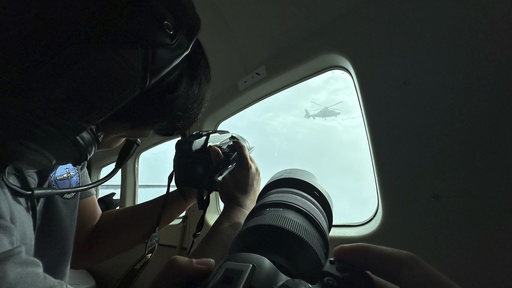The Chinese helicopter’s actions were aimed at forcing a Cessna Caravan turboprop, operated by the Philippine Bureau of Fisheries and Aquatic Resources, out of an area that China claims as its airspace. The situation escalated during a tense approximately 30-minute period as the Philippine plane conducted its low-altitude patrol around the Scarborough Shoal, encountering the Chinese helicopter hovering nearby in overcast conditions.
At one point, the Philippine pilot reiterated the danger posed by the Chinese aircraft, stating, “You are violating the safety standard set by FAA and ICAO,” referring to the protocols established by the U.S. Federal Aviation Administration and the International Civil Aviation Organization that dictate safe distances between aircraft to prevent potential accidents.
Throughout the encounter, the Philippine plane maintained its course, showing no signs of needing to divert to avoid a crash. Meanwhile, both the Philippine Coast Guard and the Bureau of Fisheries expressed their dedication to upholding sovereignty and maritime rights in the West Philippine Sea, the name used in the Philippines to describe the contested waters near its western coast. This statement comes amidst China’s increasingly assertive actions in the region.
From China’s perspective, their military stated that the Philippine aircraft had “illegally entered” what it calls Huangyan Island’s airspace without permission. The Chinese Southern Theater Command organized both naval and aerial forces to track and issue warnings to the Philippine plane, with Senior Colonel Tian Junli accusing the Philippines of spreading “false narratives.”
This latest confrontation is anticipated to prompt a formal protest from the Philippine government and exemplifies the longstanding territorial disputes in one of the world’s busiest shipping routes. The tensions involve multiple nations, including Vietnam, Malaysia, Brunei, and Taiwan, and have escalated notably over the past two years, particularly in the regions of Scarborough Shoal and Second Thomas Shoal, where a grounded Philippine navy ship remains surrounded by Chinese vessels.
Following a tense standoff in 2012, China increased its naval presence around Scarborough, and in 2013 the Philippines sought international arbitration to resolve the dispute. A ruling from a United Nations-backed panel in 2016 declared China’s expansive claims in the South China Sea invalid, based on the United Nations Convention on the Law of the Sea (UNCLOS). Despite being a signatory, China declined to participate in the arbitration and has dismissed its findings.
In response to Chinese military assertiveness, the Philippine government under President Ferdinand Marcos Jr. has adopted a strategy of public exposure—inviting both domestic and foreign journalists on its patrols to showcase Beijing’s actions. Additionally, the Philippines has bolstered its security partnerships with the United States, Japan, Australia, France, Canada, and the European Union to enhance its defense capabilities. The U.S. has reaffirmed its commitment to defending the Philippines, its oldest ally in Asia, in the event of armed attacks against Filipino forces, maritime assets, or aircraft, including threats in the South China Sea. Conversely, China has cautioned the U.S. and its allies against interfering, labeling the situation as a predominantly Asian conflict.
